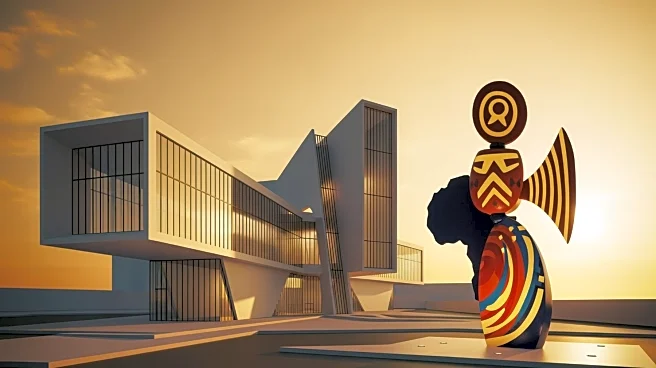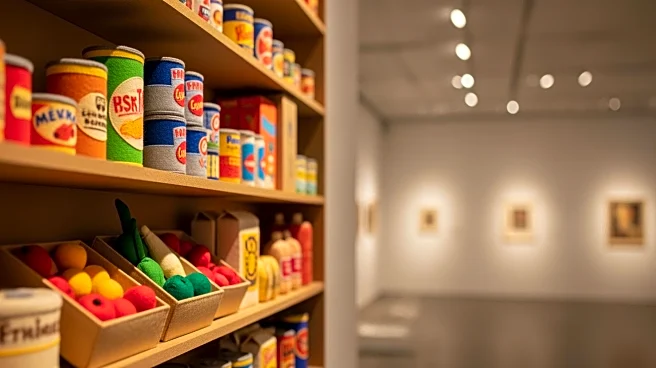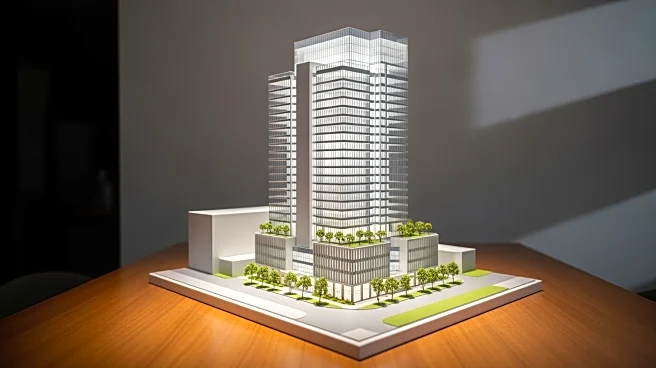What's Happening?
The Studio Museum in Harlem has reopened in a new seven-story building on 125th Street, designed by David Adjaye. The museum, founded in 1968, is a pivotal institution for promoting Black artists and the African diaspora. The reopening follows a closure in 2018 for construction, during which the U.S. experienced significant social and political events, including the COVID-19 pandemic and the murder of George Floyd. The new building features a compelling design that integrates with the neighborhood's history and architecture, offering spaces that invite exploration and reflection. The museum's collection includes works by artists like Lorraine O'Grady and Deborah Roberts, showcasing the breadth and power of Black art.
Why It's Important?
The reopening of the Studio
Museum in Harlem is significant for the cultural landscape of the U.S., particularly in promoting diversity and inclusion in the arts. The museum's focus on Black artists provides a platform for voices that have historically been marginalized. The new building not only enhances the museum's ability to display art but also connects it more deeply with the Harlem community, reflecting the social and cultural dynamics of the area. This development is a testament to the resilience and enduring influence of Black art, offering a counter-narrative to the challenges faced by minority communities in recent years.
What's Next?
The Studio Museum's reopening is expected to attract new visitors and foster greater engagement with the Harlem community. The museum will continue to host exhibitions that highlight the contributions of Black artists, potentially influencing broader cultural and artistic trends. As the museum resumes its operations, it may also play a role in ongoing discussions about racial equity and representation in the arts. The new building's design and exhibitions could inspire other institutions to consider how architecture and art can reflect and support community values.
Beyond the Headlines
The reopening of the Studio Museum in Harlem raises questions about the role of cultural institutions in addressing social justice issues. The museum's history and its new building symbolize the intersection of art, community, and activism. The design by David Adjaye, despite controversies surrounding him, offers a space that encourages dialogue and reflection on the complexities of race and identity. This development may prompt other museums to reevaluate their approaches to inclusivity and community engagement, potentially leading to broader shifts in the cultural sector.















